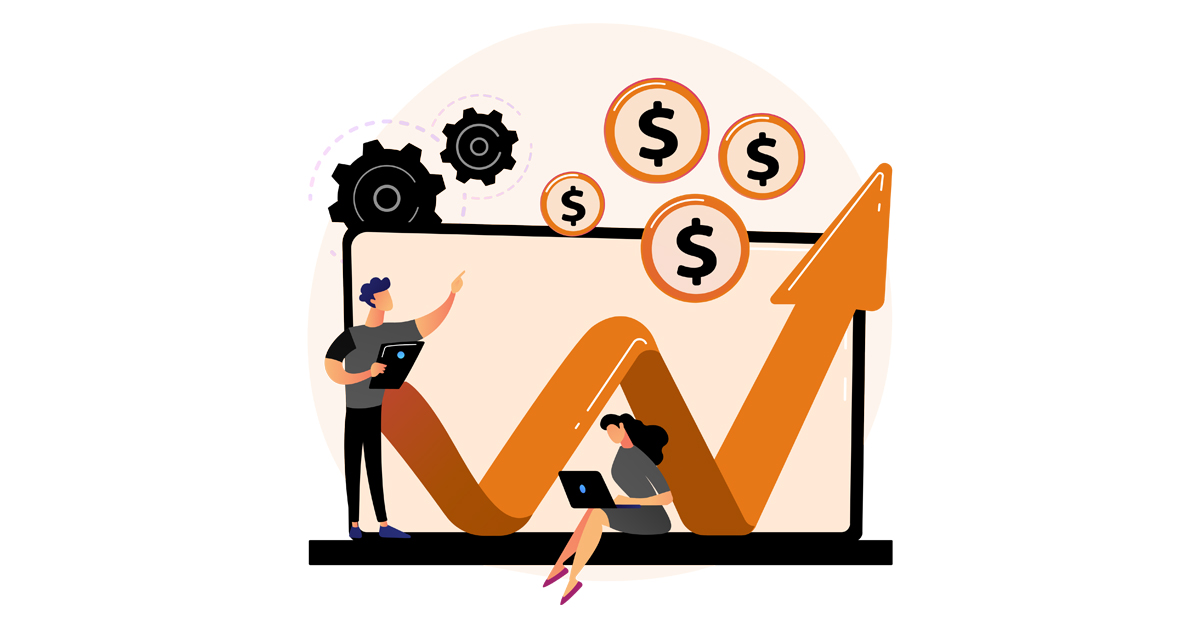As the product development industry is moving rapidly, growth and complexity can easily result in sluggishness. Hence, we need to scale the product development to maintain the development speed and adapt well to the changing needs.
What does it mean to scale a product, and what are the best practices?
This blog is intended to answer the same for you.
What is Scaling Product Ddevelopment?
Let’s begin with the basics and understand what it means to scale the product.
According to Brain Chesky, Airbnb – “It’s like a video game. You slay a dragon. You think you have completed a game, and then there’s the next level, and all of a sudden, the dragons are really big.”
As for instance, you have a great product with excellent feedback from the market. Sales have been great, and you have gained many new customers. Can you deliver the best to the consumers you are already catering to? Are you able to retain new customers?
These questions depict your capacity to expand and scale. Can you access it if you have all the required infrastructure, people & systems to support new and existing customers?
Why do you need Scalability in Product Development?

The real thing is that product development is an ongoing & continuous process. You have developed a product that fits well to the market demands, but it is not your final product.
Why? Because market demands are continuously evolving, keeping your product aligned with the market becomes essential.
If you want your product to make a place in the market and expand, you need to scale the product.
Quick Tip: At Netsmartz, we focus on three core aims while scaling product development. The three focus areas are:
- Growth
- Incorporating better technologies
- Bettering product reliability without affecting performance.
How to start with scaling product development?
Although the need to improve and change the product can arise from anywhere. Once the product is on the market, there are several causes for scaling the work;
- Adding new users: The development process includes user input and repetitive testing for new users. As you gain more audience, you will get more suggestions for the features.
- Tracking the user activity: By keeping a tab on the people you are using and loving your product, you can gather valuable data and support the most popular elements and features that users ignore.
- Keeping track of unexpected uses: Sometimes a product is built for a specific use, but you would be astonished to learn some of the most unexpected uses can tell you where & what you need to expand.
What are the various stages of scaling a product?

Since you now know what scaling is and what is the right time for the same, you need to prepare for the same now.
To scale a product effectively, you must familiarize yourself with the various stages. Here’s a quick glimpse of the same:
Analyzing & Preparing the funds
It would help if you planned milestones to seamlessly move forward with scaling the product development.
Managing the risks
Look for attributes that reduce risk and deploy them during the scaling process.
Watch the sales
Proactively monitor your product’s sales and recognize when they rise. Evaluate how it improved by asking clients & collecting feedback.
Identify the target audience
Your product is targeted at some. Hence, you must identify your ideal clients and establish a profile for them.
Enhance the development team
Optimize your development team, internal systems, technologies, infrastructure, and procedures to improve sales to the ideal consumers.
Revisit your scaling efforts
A stronger sales push can considerably increase your consumers, and you should be prepared to service them successfully!
What are the benefits of product scaling?
Product development scalability has the following advantages:
- Speed – Scaling should be about tiny, fast modifications that increase product functioning. Rapid reactions to consumer requirements and comments will help you build your user base as you have already launched your product.
- Efficiency – When scaling, the quick iteration and testing process best use development time.
- Non-disruptive – The tiny (but cumulatively considerable) changes in scale imply that customers experience minimal disturbance or difficulty. In an ideal world, they would notice and appreciate advancements while avoiding the adverse effects of change.
Scaling Product development- The Netsmartz Process
Netsmartz helps you leverage the best of our resources to make your product development scalability an easy task. We use the relevant aspects of the build-measure-learn cycle combined with agile product development.

To put scalability into perspective, consider our template development process:
- Product foundation – We investigate the fundamental product concept through product vision workshops.
- General UI/UX prototyping – Using a clickable wireframe prototype, we create a user interface (UI) idea and work on the product’s graphic design (usually with mood boards as a tool to test options).
- Minimum viable product – A workable version of the product (sometimes with only the essential features) is tested with consumers to establish basic market viability.
- Product – market fit entails developing a releasable product through frequent iteration and user testing to arrive at a version suitable for broader distribution.
Throughout this product development process, we work near the client to facilitate the knowledge transfer of our critical expertise.
So, are you planning to scale your product? You are at the right place.
Build & Scale seamlessly with Netsmartz.
Summary
Kickstart Your Project With Us!
Blog
Popular Posts
CONTACT US
Let's Build Your Agile Team.
Experience Netsmartz for 40 hours - No Cost, No Obligation.
Connect With Us Today!
Please fill out the form or send us an email to
 Don't Miss Out:
Don't Miss Out: 







